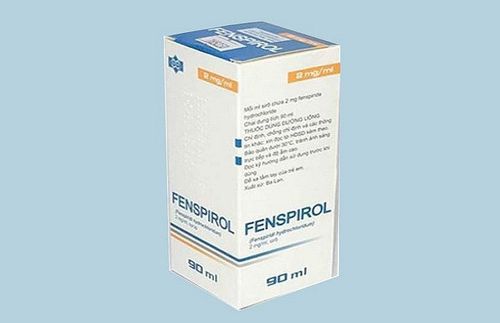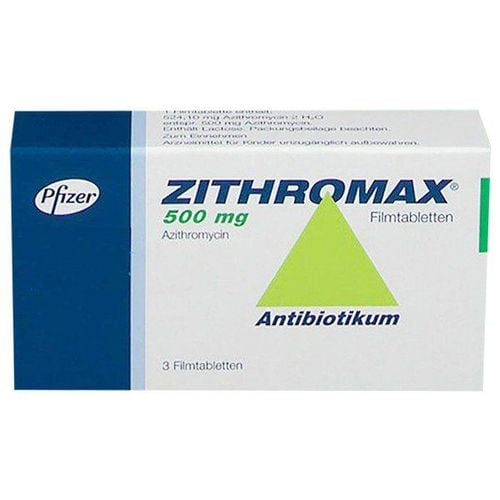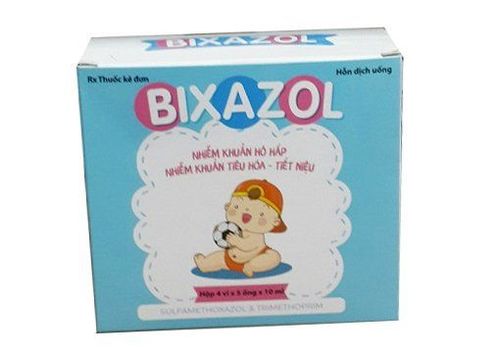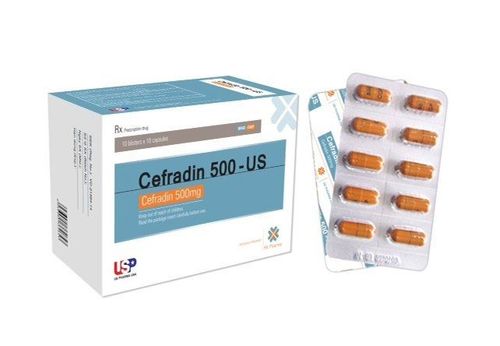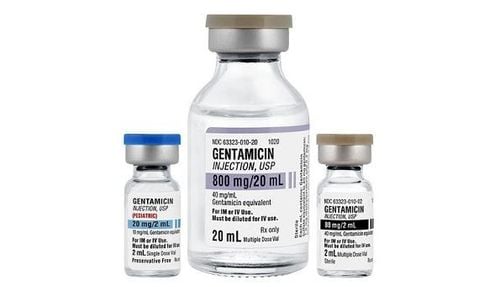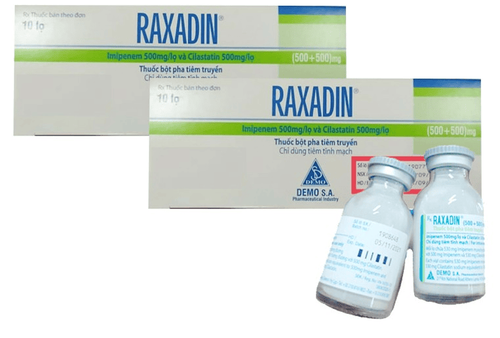This is an automatically translated article.
Patients with chronic obstructive pulmonary disease (COPD) often experience obstruction of the airways and stagnation of viscous sputum in the lungs, which obstructs breathing. Ventilation and sputum clearing for patients with chronic obstructive pulmonary disease will help control these symptoms.
1. An overview of chronic obstructive pulmonary disease
Chronic Obstructive Pulmonary Disease (COPD) is a disease characterized by chronic inflammation of the lining of the bronchi, leading to gradual, irreversible obstruction of the airways. This process involves inflammation of the lungs due to smoke, gases or noxious particles,...Initially, chronic obstructive pulmonary disease only affects the small bronchi and the lung parenchyma. However, when it enters a severe stage, the disease not only causes damage to the lungs but also affects many organs in the body such as the heart, bones, muscles, nerves, causing metabolic disorders,...
Million Symptoms of the disease in the early stages are cough, prolonged sputum production. Later, the patient presented with shortness of breath. Shortness of breath at first with exertion. After this, shortness of breath appeared frequently. Towards the end of the disease, the patient has difficulty breathing even at bed rest.
There are 2 types of risk factors for COPD: intrinsic factors (gene deficiency such as alpha 1 antitrypsin enzyme deficiency) and environmental factors (smoking, exhaust gases, industrial toxic gases, environmental pollution) school,...). In particular, because there is no method that can completely cure COPD, it is necessary to strictly implement preventive measures by eliminating the cause of the disease (quitting smoking, improving the living environment, using health care products). medicines to treat symptoms, detect and treat accompanying diseases in the respiratory tract early,...) will help control the disease effectively.
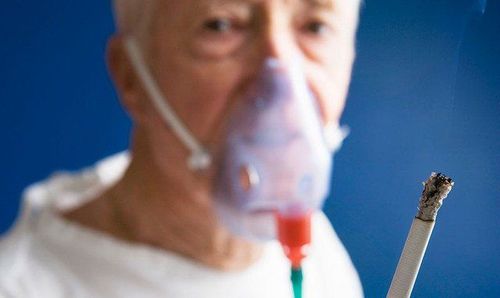
Khói thuốc lá là nguyên nhân gây ra bệnh phổi tắc nghẹn mãn tính
Trắc nghiệm: Làm thế nào để có một lá phổi khỏe mạnh?
Để nhận biết phổi của bạn có thật sự khỏe mạnh hay không và làm cách nào để có một lá phổi khỏe mạnh, bạn có thể thực hiện bài trắc nghiệm sau đây.2. Ventilation and sputum clearing methods for COPD patients
2.1 Methods of Ventilation In patients with chronic obstructive pulmonary disease, airway obstruction is caused by chronic inflammation and air retention in the chest (due to damaged alveoli, reduced ability to contract). dilation) often occurs. As a result, air is trapped in the lungs, poor circulation, leading to lack of oxygen for the body's needs.
The main methods of ventilation are techniques to overcome air stasis in the lungs, increasing the respiratory movement of the chest. Two basic ventilation techniques are often applied:
Diaphragm breathing
In patients with chronic obstructive pulmonary disease, due to air retention in the lungs, the chest is inflated, limiting the activity of the diaphragm. Meanwhile, the diaphragm is the main respiratory muscle. If the diaphragm works poorly, it will reduce ventilation in the lungs, forcing the accessory respiratory muscles to work harder.
Practicing diaphragmatic breathing is very necessary to enhance the efficiency of breathing movements, and at the same time save energy for the patient. The technique is performed as follows:
The patient sits in a comfortable position, relaxing the shoulders and neck; Place 1 hand on the stomach, the other hand on the chest; Inhale slowly through the nose so that the hand placed on the abdomen feels the abdomen expand but keep the ribcage not moving; Squeeze the abdomen, exhale slowly through the mouth with the exhalation time twice as long as the inhalation, the hand placed on the abdomen feels the abdomen concave. People with chronic obstructive pulmonary disease should practice diaphragmatic breathing several times a day until it becomes a habit. Once mastered the technique of diaphragmatic breathing in sitting or lying position, the patient should practice diaphragmatic breathing in other positions such as when standing, walking, working,...
Pinch-lip breathing
This is the method This prevents the airway from collapsing when exhaling, allowing air to escape more easily, allowing the patient to breathe in fresh air. With this method, patients can reduce air stasis in the chest, reduce shortness of breath and are easy to exercise.
The procedure for performing the technique is as follows:
Sit comfortably, relax the neck and shoulders, inhale slowly through the nose; Lips pursed as if whistling, exhale through the mouth very slowly so that the time to exhale is twice the time of inhalation. When having difficulty breathing, such as when taking stairs, exercising, bathing, ... the patient should repeat the movement of pursed-lip breathing several times until the shortness of breath stops. Practicing many times for fluency, becoming a habit will help patients control their symptoms in a better way.
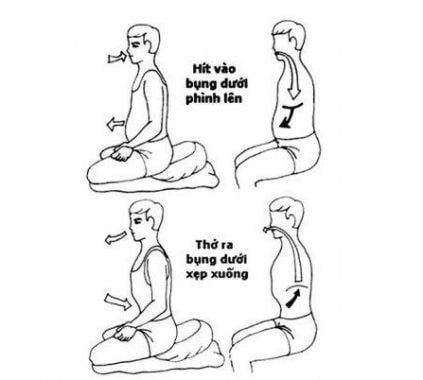
Các bài tập thở giúp thông khí trong phổi
2.2 Methods to clear phlegm, clear phlegm Viscous phlegm clinging to the bronchial wall has bad effects on the respiratory system because it obstructs the flow of air in and out of the lungs. At the same time, the sputum of viscous sputum in the lungs is also easy to cause bacterial infections, leading to respiratory infections. Sputum clearing techniques are applied when the patient has a lot of viscous sputum in the lungs, obstructing breathing or the patient has difficulty in spitting up sputum.
There are 2 techniques to clear phlegm for patients with chronic obstructive pulmonary disease (COPD): Controlled cough technique
When the bronchi are full of viscous sputum, the patient often coughs according to the body's natural reflex to expel the sputum. . However, the cough due to reflex often makes the patient tired and short of breath, but cannot push the viscous sputum out. Therefore, patients should apply controlled coughing techniques to expel sputum, clear the airways without causing fatigue and discomfort.
The procedure to instruct a controlled cough is as follows:
The patient sits in a comfortable chair, inhaling slowly and deeply; Hold your breath for a few seconds; Cough twice. The first time helps to loosen phlegm and the second time helps push the phlegm out. Sputum into a vial (for testing) or a tissue (dispose of in the trash); Breathe in slowly, gently, purse your lips a few times before repeating the cough if you still feel sputum; Depending on the strength of the cough, you may have to repeat the above steps many times to push the sputum out. The purpose of controlled cough is not to relieve cough, but to take advantage of an effective cough movement to clear phlegm, clear the bronchi. Whenever there is a feeling of coughing, the patient should not hold his cough but should follow this technique.
Strong exhalation technique
Some chronic obstructive pulmonary disease patients with weak coughing force will experience fatigue even with controlled coughing techniques. In these cases, the patient can perform a forceful exhalation technique (instead of a controlled cough if there is insufficient coughing force). This technique consists of 4 steps as follows:
Inhale slowly and deeply; Hold your breath for a few seconds; Exhale forcefully, lengthen so that the sound is heard as "kha"; Inhale gently and evenly a few times before repeating the movements above. Besides 2 techniques of controlled cough and strong exhalation, patients should also take additional measures to support sputum clearance: Drink enough water every day (minimum 1.5L of water) to thin sputum, help expectoration. phlegm easier. In addition, when using cough medicine, patients need to have a doctor's prescription: Only use cough medicine to loosen phlegm, do not use drugs that inhibit the cough reflex.

Uống nhiều nước mỗi ngày giúp làm loãng đờm
Ventilation, clearing sputum in people with chronic obstructive pulmonary disease (COPD) is an essential respiratory support method to help patients breathe easier, reduce shortness of breath, reduce air stasis in the chest and can expel sputum. effective. When performing the above techniques, patients should strictly follow the doctor's instructions to get the best results.
Vinmec International General Hospital is the address for examination, prevention and treatment of many respiratory diseases, including chronic obstructive pulmonary disease. The examination, diagnosis and treatment of diseases are carried out by qualified and well-trained doctors along with modern medical equipment, which will bring optimal treatment results to patients.
In order to improve service quality as well as serve the requirements of comprehensive health care, Vinmec now also deploys convenient medical services such as a lung cancer screening package, which is especially useful for those patients who regularly smoke and are exposed to tobacco or have a history of chronic obstructive pulmonary disease and many other respiratory diseases.
Please dial HOTLINE for more information or register for an appointment HERE. Download MyVinmec app to make appointments faster and to manage your bookings easily.




